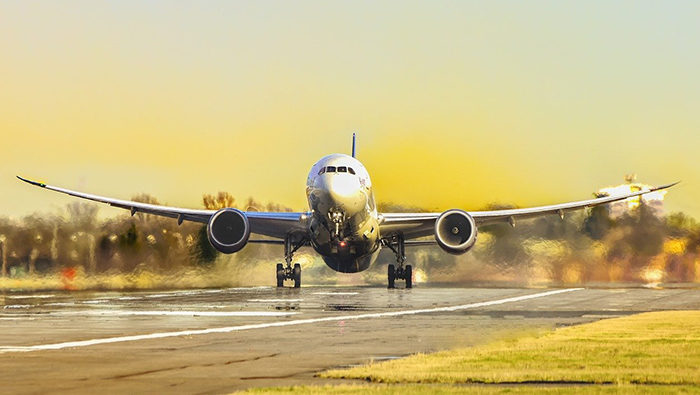
Muscat: Middle Eastern airlines’ January 2023 traffic rose 97.7 per cent compared to the same period in 2022, according to a new report.
“Capacity increased 45.9 per cent and load factor climbed 20.8 percentage points to 79.2 per cent in January 2023, the Geneva-based International Air Transport Association (IATA) announced in its latest report.
Total traffic in January 2023 (measured in revenue passenger kilometres or RPKs) rose 67 per cent compared to January 2022. Globally, traffic is now at 84.2 per cent of January 2019 levels.
Domestic traffic for January 2023 rose 32.7 per cent compared to the year-ago period, helped by the lifting of the zero-COVID policy in China. Total January 2023 domestic traffic was at 97.4 per cent of the January 2019 level.
International traffic climbed 104.0 per cent versus January 2022 with all markets recording strong growth, led by carriers in the Asia-Pacific region. International RPKs reached 77.0 per cent of January 2019 levels.
“Air travel demand is off to a very healthy start in 2023. The rapid removal of COVID-19 restrictions for Chinese domestic and international travel bodes well for the continued strong industry recovery from the pandemic throughout the year. And, importantly, we have not seen the many economic and geopolitical uncertainties of the day dampening travel demand,” said Willie Walsh, IATA’s Director-General.
Asia-Pacific airlines posted a 376.3 per cent increase in January traffic compared to January 2022, by far the strongest year-over-year rate among the regions, but off of a very low base when much of the region was still closed to travel. Capacity rose 167.1 per cent and the load factor increased 36.6 percentage points to 83.3 per cent, the highest among the regions.
European carriers saw a 60.6 per cent traffic rise versus January 2022. Capacity increased by 30.1 per cent and the load factor rose 14.2 percentage points to 75.0 per cent.
Cargo volumes drop
Middle Eastern carriers experienced an 11.8 per cent year-on-year decrease in cargo volumes in January 2023. This was, however, an improvement to the previous month while capacity increased 9.6 per cent in January 2023 compared to January 2022.
Elaborating further, the IATA report said that Asia-Pacific airlines saw their air cargo volumes decrease by 19 per cent in January 2023 compared to the same month in 2022. This was a performance improvement compared to December (-21.2 per cent). Airlines in the region continue to be impacted by lower levels of trade and manufacturing activity and disruptions in supply chains due to the residual effects of COVID restrictions that were imposed by China.
Additionally, the positioning of the Lunar New Year would have impacted cargo volumes in January. Available capacity in the region increased by 8.8 per cent compared to January 2022.
Global demand, measured in cargo tonne-kilometres (CTKs*), fell 14.9 per cent compared to January 2022 (-16.2 per cent for international operations).
Capacity (measured in available cargo tonne-kilometres, ACTK) was up 3.9 per cent compared to January 2022. This was the first year-on-year growth in capacity since October 2022. International cargo capacity increased by 1.4 per cent compared to January 2022. The uptick in ACTKs reflects the strong recovery of belly capacity in passenger airline markets offsetting a decline in international capacity offered by dedicated freighters.
“With January cargo demand down 14.9 per cent and capacity up 3.9 per cent, 2023 began under some challenging business conditions. That was accompanied by persistent uncertainties, including the war in Ukraine, inflation, and labour shortages. But there is solid ground for some cautious optimism about air cargo,” said Willie Walsh.
“Yields remain higher than pre-pandemic. And China’s much faster-than-expected shift from its zero COVID policy is stabilising production conditions in air cargo’s largest source market. That will give a much-needed demand boost as companies increase their engagement with China,” he added.